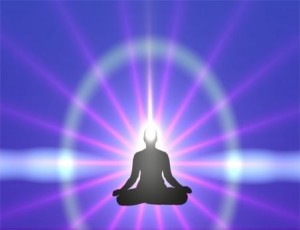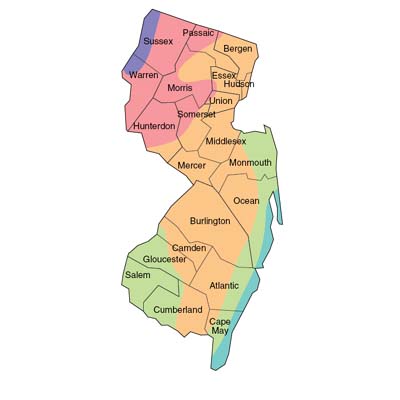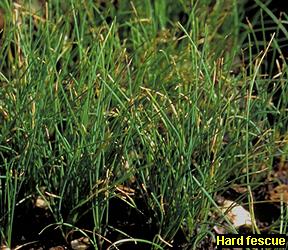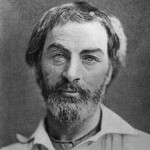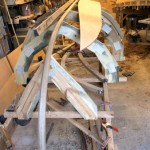Below are links to my final project and the meditational exercise on powerpoint. Hope everyone has a great break!
The title of my essay is “Evolution of an Approach: A Chronological Overview of Major Critical Approaches to the subject of Whitman and Mysticism.” Click on the links below to view my essay and the supplemental works cited.
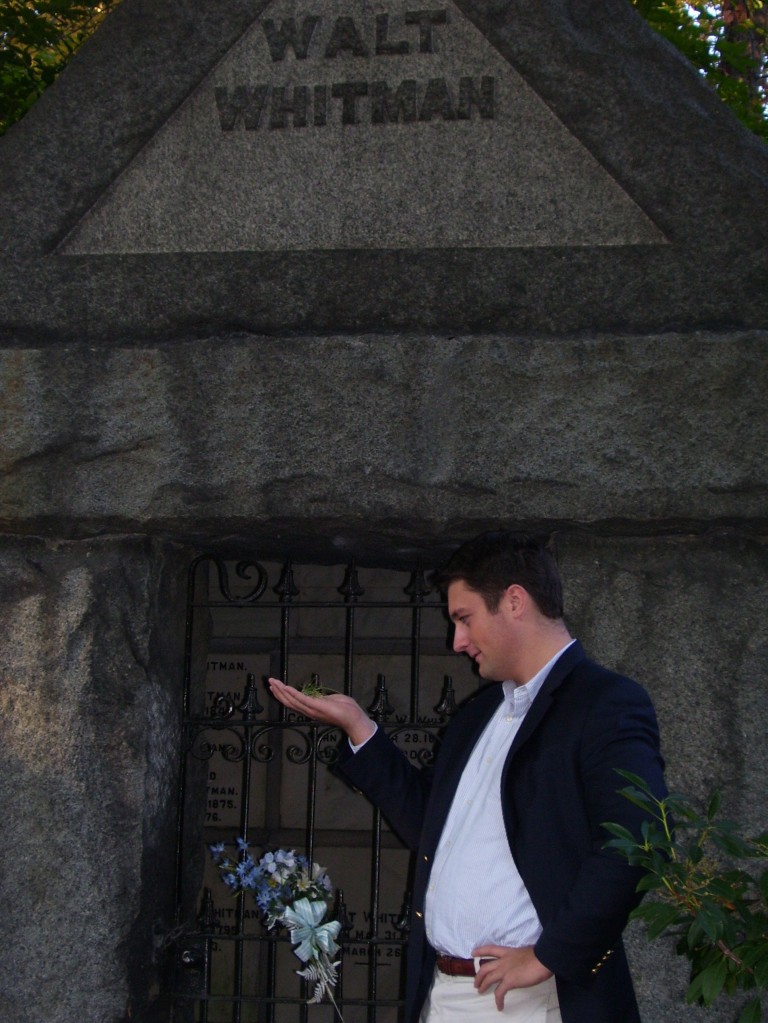
Some references to grass in “Song of Myself” (emphasis is mine):
“I lean and loaf at my ease observing a spear of summer grass” (I.5).
“A child said What is the grass? fetching it to me with full hands; / How could I answer the child? I do not know what it is any more than he” (6.1-4).
“The smallest sprout shows there is really no death, / And if ever there was it led forward life” (6.41-42).
“This is the grass that grows wherever the land is and the / water is,” (17.8-9).
“I believe a leaf of grass is no less than the journey-work of the stars,” (31.1-2).
“Behavior as lawless as snow-flakes, words simple as grass,” (39.9).
“I hear you whispering there O stars of heaven, / O suns-O grass of graves” (49.15-16).
“I bequeath myself to the dirt to grow from the grass I love, / If you want me again look for me under your boot-soles” (52.11-12).
Originally, I intended to write a personal reflection on our visit to Harleigh Cemetery and Walt Whitman’s grave site, though I thought it wiser to wait until I had completed my bib essay, thinking that my research might yield interesting points about Whitman’s grass and its relation to Mysticism, which it did.  But before jumping into the relevance of grass to the subject of Whitman’s Mysticism, I’d like to share a few facts about the type, or species of grass which appears in the area of Whitman’s grave site in Harleigh Cemetary, the very same clump-like grass that Lisa captured me holding on her camera:
But before jumping into the relevance of grass to the subject of Whitman’s Mysticism, I’d like to share a few facts about the type, or species of grass which appears in the area of Whitman’s grave site in Harleigh Cemetary, the very same clump-like grass that Lisa captured me holding on her camera:
Festuca Longifolia (Hard Fescue)
-Fine-bladed grayish to dark-green with semi-erect growth habit and heavy roots.
-One of the “hardiest” of the fescues <-A “rough” like Whitman 
-Shade and drought resistant (Cool-Season Grass)
-Grows best in the north and the higher elevations
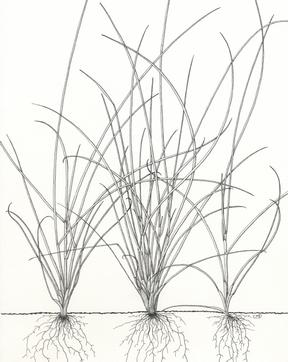 -Good as a non-mowed turf for slopes<-The grass I hold in the picture comes from the slope of the hill next to W’s Grave
-Good as a non-mowed turf for slopes<-The grass I hold in the picture comes from the slope of the hill next to W’s Grave
-Can grow in some of the most adverse of conditions and in heavily shaded areas <-Whitman’s shaded grave site, for instance
-Grows in clump formations & bunches <-Like “the beautiful uncut hair of graves,” to me, this grass actually looked and felt like tufts of curling hair
Grass and Whitman’s Mysticism
An understanding of the literal textbook definition of “grass” is helpful in order to establish the mystical meanings which Whitman attaches to the term. The OED defines grass in essentially three ways: 1) Herbage in general, the blades or leaves and stalks of which are eaten by horses, cattle, sheep, etc, 2) a term used in figurative phrases, such as “to let no grass grow under one’s feet,” meaning, to make the most of one’s time, and 3) a slang term for various things, especially (for this discussion), drugs.
Now, grass, both as a general term (for any herbage), and as eaten by a diverse community of creatures, has mystical/religious/democratic connotations. “Song of Myself,” has been interpreted as a mystical riddle of death and the grass itself symbolizes this riddle: “To get to the bottom of the riddle of the grass is to get to the bottom of death…” (Hutchinson 75). In this way, grass becomes a general term not only for all vegetation, but for all life as well and so, if the grass is a symbol for life, then how does it solve the riddle of death? Well, we find clues to the solution in Whitman’s writing: “the smallest sprout shows there is really no death,/ And if there ever was it led forward to life,” and “I bequeath myself to the dirt to grow from the grass I love, / If you want me again look for me under your boot-soles…” Whitman seems to suggest that the answer to the problem of death is life itself and, in this view, death becomes merely a part of the endless cycle of re-birth. Whitman’s body will decay and become absorbed into the earth, which will feed the grass, and subsequently, nourish a multitude of creatures, inlcuding other humans (in a way, like cannabalism, only a few incarnations removed 😉 )
The universality of grass as a source of nourishment and the diversity of creatures who partake of it as such would have led Whitman to view it as a mystical symbol of democracy (of unity in diversity); and Whitman’s mysticism, as I understand it from my research, does not exclusively resemble the mysticism of any single religion; and so, at another level, the universality of the grass parallels the nondenominational nature of his mysticism.
Grass as it appears in a range of figurative phrases suggests a certain malleability, or even simplicity, allowing for numerous applications and understandings of the term to appear within different contexts. This brings us to the second mystical connotation: grass as simple/natural object of meditation and expanding metaphor. Whitman, influenced by the American Transcendentalists who believed in finding God in Nature, would have understood grass as the perfect object of, or starting point for this kind of mystical/revelatory experience-the experience he wishes to convey in his poetry (Kuebrich 19). Now, Whitman’s notes reveal that he practiced a method of meditation, probably as a way to become receptive and open to poetic inspiration when composing the Leaves, and some view the Leaves themselves as a kind of guided-meditation, with Whitman as guide and the grass as his chosen object of contemplation: “I lean and loafe at my ease observing a spear of summer grass.” We interpret his words to mean that he is entering a relaxed and receptive state by focusing all of his attention on a single, simple object (Hindu’s would say “mantra”) in nature. Whether we call this state mystical or meditative seems to be irrelevant, since both share the same goal or purpose: to achieve a higher state of consciousness and, ultimately, transcendant awareness (of the unity of all things, the meaning of death, etc.., or even a sense of inner-peace/serenity).
Furthermore, Whitman, in his choice of grass as his object of meditation, does not mean that we, his readers, must use this object as our own starting point; rather, grass seems to suggest that any simple, apparently insignificant object in nature will do. And yet, grass lends itself well to the meditative goal of expanded awareness and we find that, for Whitman, his perception of the grass expands and his certainty increases, in a series of metaphors in answer to the child’s question about the meaning of the grass in “Song of Myself.”
Finally, an understanding of grass, in contemporary society, as a slang term for herbal drugs, such as marijuana, emphasizes a major aspect of Whitman’s mysticism, namely, the importance of the senses in the mystical experience. With lines like “the sniff of green leaves and dry leaves,” and “the handkerchief of the Lord,” Whitman appeals to readers’ sense of smell and we are drawn to the aroma of the grass as our other senses (of taste, sound, touch, and sight) are bombarded with poetic imagery. George B. Hutchinson, author of “The Ecstatic Whitman,” maintains that this bombardment of the senses invariably lulls readers into a state of ecstasy, or, more specifically, the shamanic trance. Now, while there is no proof that Whitman deliberately structured “Song of Myself” as a shamanic ecstacy, the fact remains that his poetry appeals to the senses, making the experience of reading it more real and vivid; and thus, we become more receptive to any revelations the grass might bestow.
Goodblatt, Chanita, Cognitive Psychology and Whitman’s “Song of Myself”, Mosaic, 19:3 (1986: Summer) p.83.
“Grass” Oxford English Dictionary. Oxford University Press, 2009 <http://dictionary.oed.com.proxy.libraries.rutgers.edu/>.
Hutchinson, George B. The Ecstatic Whitman: Literary Shamanism & the Crisis of the Union. Columbus: Ohio State UP, 1986.
Kuebrich, David. Minor Prophecy: Walt Whitman’s New American Religion. Bloomington: Indiana UP, 1989.
The UC Guide to Healthy Lawns “Healthy Lawns- Hard Fescue” Statewide IPM Program, Agriculture and Natural Resources, University of California, 2004. <http://www.ipm.ucdavis.edu/TOOLS/TURF/TURFSPECIES/hrdfes.html>.
Whitman, Walt. “Song of Myself (1891).” Whitman Poetry & Prose. Library of America, 1996.188.
Image 1: USDA Zone Map for New Jersey <http://www.outsidepride.com/images/resources/states/newjersey.jpg>.
Image 2: “Hard Fescue” <http://www.american-lawns.com/art/hard_fescue.jpg>.
Image 3: “Overall plant structure of hard fescue” <http://www.ipm.ucdavis.edu/TOOLS/TURF/IMAGES/KEYIMAGES/hardfescue.jpg
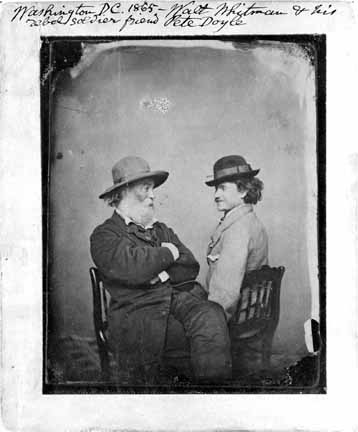
“Is there even one other like me-distracted-his friend, his lover, lost to him?”
After reading Fone’s introduction to “Masculine Landscapes,” the Encyclopedic entry on “Women as a Theme in Whitman’s Writing,” and after close readings of some of his poetry (Namely, “Song of Myself” and the “Calamus” poems), and after reflecting on some sections of Reynolds, I feel informed and comfortable enough to offer my opinion on the related topics of Whitman’s sexuality and how that sexuality, to borrow a term of Whitman’s, emanates through his writing.
Was Walt Whitman a homosexual? I asked myself early in the semester when we first began reading Reynolds and several students appeared to “know” already that he was gay. I did not immediately share this instinct and for me, the issue of Whitman’s sexuality was malleable and inconclusive- sure, his writing appeared at times homo-erotic and at most times, passionate and sensuous, but at the same time, in Whitman’s own words, “I turn the bridegroom out of bed and stay with the bride / myself, / I tighten her all night to my thighs and lips” (“Song of Myself “) As we “took the dive” so to speak, into Whitman’s America with Reynolds, it sounded like Reynolds himself approached Whitman’s sexuality with a kind of hesitation-to-define in clear terms, one way or the other, which side of the sexual “line” Whitman ought to be situated, in light of the evidence.
The strongest evidence I came across, and the evidence which eventually swayed me, finally, conclusively, in one direction over the other, was 1) Whitman’s experiences at Southold (p.70 and on-he is accused of pederasty and chased out of town by a mob) and the subsequent outpouring of emotions those experiences loosed in his writing as well as 2) his phrenological self-therapy, wherein Whitman, quite clearly, attempts to suppress his overly-intense feelings for Peter Doyle (p.250) whom he encodes as 16.4 <-for anyone wondering, 16 stands for the sixteenth letter of the alphabet “P” and 4 for the fourth, “D.” His coding of Doyle’s initials, far from complex, suggests a desire to mask his true, homosexual affections towards “his friend,” at a time (late 19th century) when homosexuality gradually came to be viewed, in medicine and psychiatry, as a treatable affliction: it is likely that Whitman himself had, to a certain extent, perhaps even unconsciously, internalized some of the growing homophobia of the day.
And so, “the bard of comrades” is gay. So, what? Does it really mean anything? Does it change anything? I am sure that it does mean something, maybe some things. For instance, I think that it is important to understand how Whitman’s repressed homosexuality may have influenced and even shaped, I think probably to a large degree, his confrontational approach to the process of writing poetry as exemplified by his pervasive “Fierce Wrestler” icon. Also, I feel that Whitman’s writings, held to be enabling for women, may be interpreted (especially in the Calamus group) as enabling, if only in that his struggle is made manifest, for homosexuals with whom, in lines that read like my opening quote, he empathizes and perhaps even sympathizes.
But, I believe that there is more that is unchanged by Whitman’s sexuality.
The Whitman who speaks in his poems, the independent “I” is not always the same as (and often seems to be denied by) the vocal, public Walt Whitman. Two examples of this pattern: 1) Whitman’s assertion, in a letter to Emerson, that there is “not the first breath of manly love in print,” and 2) Whitman’s flat denial to British writer John Addington Symonds point-blank question about the possibility of semi-sexual emotions and actions intruding upon Whitman’s conception of comradeship (Reynolds 198). Whitman even confides in Traubel that he himself may not know after all what he meant (Fone 7). So, who are we to trust? I say that if we trust the independent “I,” who speaks in his poetry, that same Whitman who “contains multitudes,” than the sexuality of the real, the denying, sexually-repressed/public Whitman seems less immediate than the “I” whose sexuality it is much more difficult to put a finger on. The “I” Whitman is neither strictly heterosexual nor homosexual: “I am the poet of the woman the same as the man.” The same “I” who “turns the bridegroom out of bed” in the very next line, is “the wife’s voice.” The “I” in section 16 of “Song of Myself” is “Maternal as well as paternal.” The “I” Whitman seems to defy all categorization, including sexual. The “I” fosters a more fluid and open attitude towards sexuality and prevents even Whitman’s propensity for homosexuality to intrude in its integrating processes: “I do not ask who you are, that is not important to me, / You can do nothing and be nothing but what I will infold you.”
And so, while Walt Whitman himself may have been a homosexual, Whitman’s ideal, poetic-independent “I” confronted homosexuality along with heterosexuality and absorbed them both: the “I” combined reverence and admiration of the reproductive processes between men and women as well as an understanding of and appreciation for the comradeship shared between members of the same sex. What are we to make of this? Well, I like to think that the open-mindedness and peaceful acceptance of all forms of sexual expression of Whitman’s “I” serves as a standard against which we, as Americans, might constantly measure and improve ourselves.
Works Cited
Fone, Byrne R. S. Masculine Landscapes: Walt Whitman and the Homoerotic Text. Carbondale and Edwardsville: Southern Illinois University Press, 1992.
Le Master, J.R., Donald D. Kummings, eds. “Women as a Theme in Whitman’s Writing.” Walt Whitman: An Encyclopedia. New York: Garland Publishing, 1998.
Reynolds, David S. Walt Whitman’s America: A Cultural Biography. New York: Vintage Books, 1996.
Whitman, Walt. “Hours continuing long. . . (1860).” Whitman Poetry & Prose. Library of America, 1996.
Whitman, Walt. “Song of Myself (1855).” Whitman Poetry & Prose. Library of America, 1996.
Whitman, Walt. “States! (1860).” Whitman Poetry & Prose. Library of America, 1996.
Image 2: “Whitman with Peter Doyle” Art Durkee (Blogger, Musician, Artist) <http://www.arthurdurkee.net/images/WhitmanDoylew.jpg>.
“And I know that the spirit of God is the eldest brother of my own,
And that all the men ever born are also my brothers . . . . and the women my sisters
and lovers,
And that a kelson of the creation is love; ” (Whitman 83-86).
1. a. A line of timber placed inside a ship along the floor-timbers and parallel with the keel, to which it is bolted, so as to fasten the floor-timbers and the keel together; a similar bar or combination of iron plates in iron vessels.
b. With qualifying terms: assistant kelson or keelson = side-kelson; bilge-k., an additional strengthening beam placed fore-and-aft in the bilge of a vessel, parallel to the kelson; boiler-k., a bilge- or cross-kelson supporting the boilers of a steamer (Hamersly Naval Encycl. 1881); box-k., a kelson whose section is box-shaped; cross-k., a beam placed across the kelson to support the boilers or engines of a steamer (Webster, 1864); engine-k., a side- or cross-kelson supporting the engines in a steamer (Hamersly, 1881); false k., an additional beam placed longitudinally above the kelson in order to strengthen it
1942 R. H. LONGE in R. A. Beaumont Aeronaut. Engin. xviii. 486/1 The keelson..is the backbone of the hull [of a flying-boat], and runs the full length of the hull, from the stem or bow, to the stern-post.
This word, kelson, what does it mean, I wondered to myself as I read “Song of Myself” for the very first time a few weeks ago. I wondered, though I admittedly failed (then, anyway) to consult a dictionary or even steal a quick peak at Wikipedia’s definition. I was giving special attention to this stanza because it was one (among several others) that I was considering to use with my image gloss at the time. The three lines preceding the line in which the esoteric “kelson” appeared were particularly interesting to me, in a spiritual way; I mean, specifically the talk about all men being my brothers all all women my sisters, God, creation, love… these lines appealed to my theosophical&mystical tendencies. I felt that, in these lines, Whitman was professing a belief in concepts like The Universal Brotherhood of Man and man’s relationship with the divine-and God’s relationship to the creation and men, for that matter… Ahh, but kelson… what did it mean to say that “a kelson of the creation is love?” as Whitman sings. Well, as it turns out, kelson, refers to a kind of foundational “backbone” of a ship, a “line of timber,” a “strengthening beam…” I discovered that the kelson provided longitudinal support as well as base-support (parallel with the keel). Furthermore, the essential function of a kelson appears to be to bind the longitudinal keel with the wooden boards of the boat-> the outer, transverse, shell, if you will. When applying these details to the line of the poem in which the term “kelson” appears, the formerly obscured meaning of the line comes to light. “A kelson of the creation is love.” If we are to accept God as the catalyst/initiator of The Creation (as Whitman indirectly does) then “a kelson,” or foundational backbone/ connecting beam, of His Creation is love. Said in another way, the answer to the question of Creation, the beam which supports, explains, and motivates it is in fact, Love, or specifically, God’s love for men.
**Update: After reading some of James E. Miller Jr.’s “Song of Myself as Inverted Mystical Experience,” my initial intimations seem to be confirmed (or, at least Miller’s on my side ;)) ! Miller’s fascinating interpretation classifies the poem into 5 phases of a Mystical Experience, from the awakening of self to union (with the Transcendent) and finally, emergence from the mystical state. Towards the end of the poem, Whitman again makes mention of “the creation,” in the line “To it the creation is the friend whose embracing awakes me.” Miller seems to suggest that Whitman, upon awakening from his transcendent/mystical experience, struggles and ultimately cannot put into words or define the exact nature of his experience (or of his newly-acquired transcendent wisdom/understanding). However, I think there is a clue in the earlier lines where “the creation” is first mentioned. As we know, it is God who is responsible for “the Creation” and so, if we replace Whitman’s inexpressible “It” with what God is-namely, the Infinite, the Ultimate, the inexhaustible- then we may have a clearer idea of what Whitman came to understand as a result of his mystical experience.
Works Cited
“Kelson” Oxford English Dictionary. Oxford University Press, 2009 <http://dictionary.oed.com.proxy.libraries.rutgers.edu/>.
Miller Jr., James E. A Critical Guide to Leaves of Grass. Chicago: The University of Chicago Press, 1957.
Whitman, Walt. “Song of Myself (1855).” Whitman Poetry & Prose. Library of America, 1996. 59.
Image 1: Composition Gallery Walt Whitman Photograph <http://www.compositiongallery.com/show/image/48/large/walt-whitman-photograph.jpg>.
Image 2: “Elfyn Photograph” Tom Regan (Boatbuilder, Owner Grapevine Point Boat Works) <http://www.grapeviewpointboatworks.com/images/elfyn/garboard.jpg>.
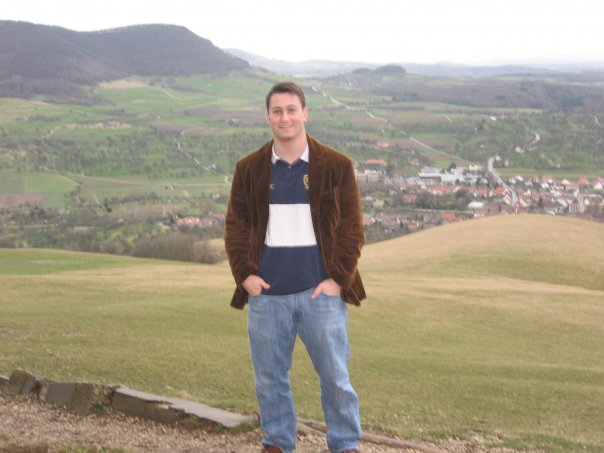
“Do you see O my brothers and sisters?
It is not chaos or death . . . . it is form and union and plan
. . . . it is eternal life . . . . it is happiness.”
-Walt Whitman “Song of Myself” (1855)
These lines by Whitman, for me, really capture the way I felt when this picture was taken, of myself standing against a breathtaking backdrop of the South-German countryside. The view from where I stood was spectacular and humbling; though it was on the slant of a hill and was no mountaintop, the landscape seemed to have been sculpted by divine hands. I looked down and out into the village with its red clay-colored rooftops, and farther out, at the rectangles of orchards, criss-crossed by a network of rivers and streams which trailed off and away into valleys cradled between more green hilltops and mountains and it all seemed too perfect. In witnessing scenes like this, I perceive an assuring nod, a warming, smile from the Universe. ![]()

